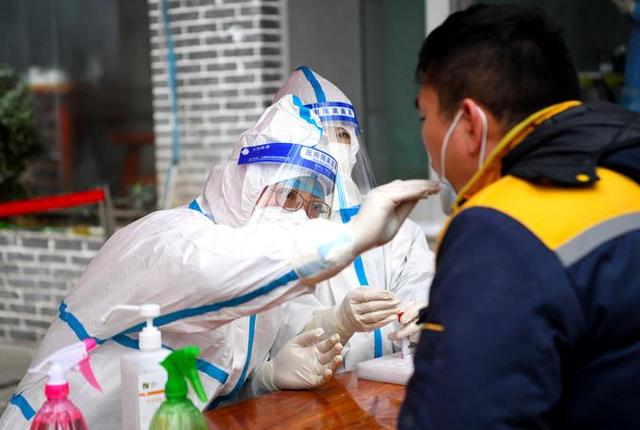

In China, which adheres to the “zero corona” policy, a video of conducting a PCR test of Wuhan Corona nucleic acid for fish has been released, sparking controversy.
According to a report by Hong Kong’s South China Morning Post SCMP on the 31st of last month, a video of a quarantine agent stirring a fish with a cotton swab in his mouth was released at a seafood market in Shanghai.
The video was filmed on the 27th of last month, and the person holding the fish is known to be a local merchant.
The video also contains the voices of quarantine personnel asking, “Don’t let go of your hand holding the fish,” and a seafood market merchant answering, “Fish doesn’t bite.”
A quarantine expert conducts PCR tests on shrimp from a seafood market in Shanghai, China.
SCMP said, “In China, there are criticisms that PCR testing on live fish is a waste of medical resources,” adding, “There are also ridicule among netizens that if the test results are positive, fish are quarantined in other tanks.”
He added, “In China, it is easy to find videos of quarantine personnel conducting Wuhan COVID-19 tests not only on chickens and cats, but also on bicycles and mail desks and chairs.”
He also added, “In mainland China, containment measures are being taken to prevent the spread of Wuhan Corona, and PCR tests for fish are part of efforts to protect food safety.”
Chinese quarantine authorities have determined that animals can spread Wuhan COVID-19 to humans. In January, a video of a quarantine agent testing garlic leaves for Wuhan corona drew attention.
The Worst Wuhan Coronavirus Situation Since the Wuhan Incident
PCR tests on various objects such as fish and chicken cats in China are continuing because the recent COVID-19 situation in Wuhan in China has been the worst every day.
According to the announcement by the China National Hygiene and Health Commission, 8,655 confirmed cases of Wuhan COVID-19 occurred in 31 provinces, cities, and autonomous districts during a day on the 29th of last month. The figure is up nearly 2,000 from 6,886 the previous day.
This is the number of local infections in mainland China, excluding cases of overseas inflow, and in particular, 5,982 confirmed cases were confirmed in Shanghai alone during the day.
Photo of Chinese medical staff testing for Wuhan COVID-19
The Hai city authorities divided the Huangpu River into east and west, then blocked it sequentially, and began full inspections. The lockdown period is until the 4th of next month, and the number of confirmed cases in Shanghai is expected to continue to increase for the time being.
China’s economic capital, Shanghai’s gradual blockade, is expected to affect China’s overall economy.
According to Bloomberg News, researchers at the Chinese University of Hong Kong estimated that if Shanghai is completely blocked, China’s real gross domestic product and GDP will decrease by 4 during the blockade. If the four major cities, including Shanghai, Beijing, Tianjin and Chongqing, are blocked together, the GDP decline is expected to grow to 12.
Earlier, the Chinese authorities decided to completely block down after a series of confirmed cases in Shenzhen, called the world’s IT hub. As large cities were blocked one after another, there are concerns that it is the worst situation since the Wuhan crisis in early 2020.
Xi Jinping Sticks to ‘Zero Corona’ Ahead of the 20th Party Congress to Decide on a Third Term
Chinese President Xi Jinping is sticking to a strong policy of zero corona to calm confusion and variables inside and outside the country before achieving the historical goal of confirming his third consecutive term at the 20th party convention this fall.
Corona policy is zero however, put China in growth rates was bombarded with predictions that the ankle.
China’s economic growth target for this year was around 55, but U.S. investment bank Morgan Stanley predicted that if China sticks to strict quarantine measures such as blocking the entire city, its economic growth forecast could fall by 06 points.
ANZ Bank, Australia’s major bank, also predicted that China’s economy would grow only five times this year, with Shanghai’s blockade expected to continue until early May.